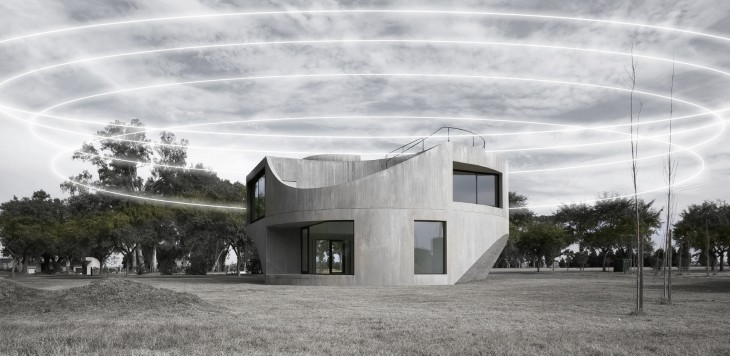RELATIONAL LOGICS | Assignment | T3
BETWEEN INTANGIBILITY AND WILL
Case study: VIEW HOUSE – Johnston Marklee Arraigada
Author website: http://www.diegoarraigada.com/view_01.htm
Image collage for academic assignment: Javier F. Ponce
Reading: MARK WIGLEY – Arch Atmosphere
There exist a series of intangible elements surrounding the architectural object that we as architects aim to control in an endless effort. The View house, located in Rosario Argentina, is an attempt to produce an architectural object in which its design is driven by the surrounding views and by introduction of the privacy element. Even dough an interesting mass- subtraction process approach and an aesthetic success,the views in time can change, the distance between neighbors cannot be controlled, it shows how uncontrollable the context can be, surpassing the architect’s will.
Wigley’s text examines the relation between the architect’s will of control and the atmosphere. We experienced the atmosphere, not the object itself. In a way, architect’s are surrounded by the illusion that atmosphere can be controlled. During architectural history, architects have tried to capture the less tangible effects of a construction. From weather conditions to light flows. Behind Lloyd’s virtual extension of horizontal or organic sky-lines, Ando’s light penetration in the interior, Portoghesis extending geometries beyond buildings, Debord’s radical potential of atmosphere, Corbusier’s line dominance or Constant’s New Babylon, there is a will to produce atmospheres. Architects create a scenery & effects, but it is about the creation of human interaction , responsive contexts and social activity which enables us to produce human atmospheres. Maybe technology will help us to further control the atmosphere and it’s intangible parameters , in order to better understand the Relational Logics behind architecture.
Regarding the possible topic of my personal research , I’m intrigued and at the same time attracted by the Self-Sufficient agenda, truly a vast topic. Since starting the career and after reading Rifkin’s “The hydrogen Economy” , among others, I wish to deepen further in the potential of introducing Real time city data & technology in order to create responsive and more efficient Cities (social, food, energy, water, etc) , to help transform from an importer/consumer city model into a Self-sufficient model and contribute to switch from a pure formalist approach in architecture into a more responsive and performative one.

